Munakata City and Fukutsu City are engaged in many urban development projects that contributed to the preservation of regional culture and the natural environment.
To preserve this precious legacy for future generations, more people must become involved.
After the property is registered as a World Heritage Site, interest in this property is bound to expand, and the ring of protection offered by World Heritage status will grow accordingly.
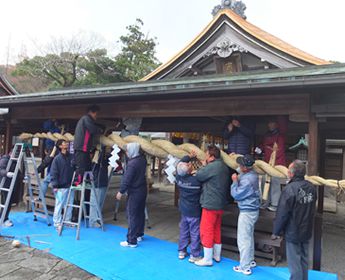
- Preserving Munakata Taisha
-
Munakata Taisha (Okitsu-miya on Okinoshima, Nakatsu-miya, Hetsu-miya, and Okitsu-miya Yohaisho) have been preserved until now by local people.
Local fishermen who possess deep faith clean the shrine precinct, offer fish, renew the shrine gate when it shows signs of wear, and in general are deeply involved with the maintenance and management of Okinoshima.
They put up shimenawa (sacred ropes) at the new year and other festivals at Okitsu-miya Yohaisho, Nakatsu-miya, and Hetsu-miya; and throughout the year, from ritual preparations to administrative tasks on the appointed day, local people take on the role of protecting Munakata Taisha in many ways.
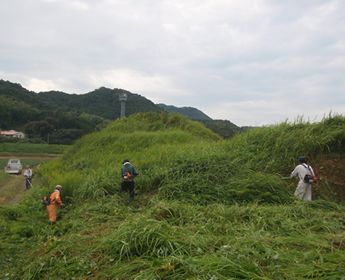
- Preserving the Shimbaru-Nuyama Mounded Tomb Group
-
Local people are leading the efforts to cut grass, clean, and perform other maintenance tasks at the mounded tomb group.
They have launched initiatives to plant cosmos on abandoned agricultural land in the area, to exhibit original figurative artwork, and to hold other events that allow people to get to know more about the mounded tomb group.
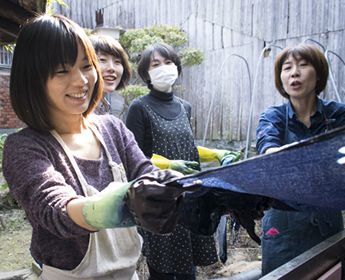
- Preserving cultural properties in the region
-
In the Munakata and Fukutsu regions, people go about their daily activities with faith, and thanks to their dedication, many historic properties survive in the region.
Local people use the sites, and they carry out the enhancement and preservation of archaeological sites through activities such as patrols for the protection of cultural properties, cleanup projects, and other maintenance works.
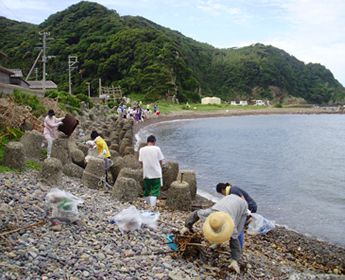
- Preserving the ocean
-
The daily lives of the people of the Munakata and Fukutsu regions have always been deeply connected to the sea.
The Koinoura coast, well known as an egg laying ground for sea turtles, is also home to endangered species such as the horseshoe crab and black-faced spoonbill.
Many initiatives are underway to protect this precious natural landscape of ocean and beaches, including research and cleanup of debris that has washed ashore due to wind and tidal currents.
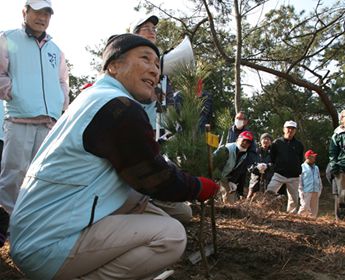
- Preserving the pine groves
-
The shores of the Munkata and Fukutsu regions form a picturesque landscape of white sand and green pines.
Pine groves are found along the coastline, including some black pines that are more than 200 years old.
The pine groves have been gradually devastated, however, by a pine-eating beetle.
The local people, unable to sit back and watch this happen, have launched an initiative to cultivate the pine groves by planting pine saplings, and by cutting away undergrowth and assorted small trees.
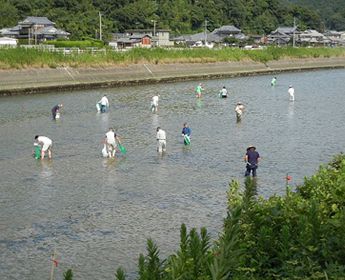
- Preserving the rivers
-
The Tsurikawa River, which flows into the Genkai Sea, has been an important water source for local people since ancient times, and they have always lived near the river, as it has been close to the essence of their livelihood.
Efforts to purify the waters of the Tsurikawa have been underway for many years in Munakata.
The goal is a river free of garbage, from its upper reaches to its mouth, and the local community has coordinated its garbage collection efforts and is also gathering objects that have been illegally dumped into the river and have sunk to the riverbed.
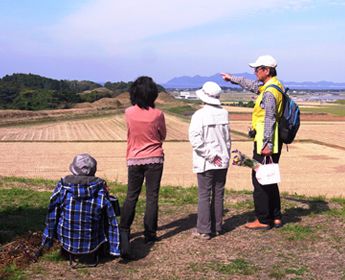
- Interpret the value of the property
-
For those who visit the property, it is also necessary to correctly communicate its value as a World Heritage Site.
Through the work of local volunteer guides, efforts are underway to communicate the World Heritage aspects of the property and its other noteworthy points in a way that is easy to understand.
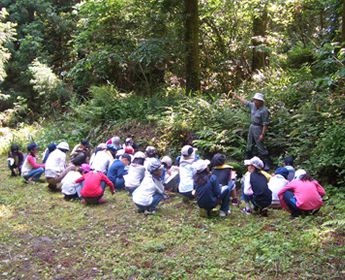
- For future generations
-
The goal for a World Heritage Site is to preserve the value of the property as a collective human legacy and pass it down to future generations.
This valuable property has been passed down to us in pristine condition by past generations, and we seek to pass down its rich natural landscape, culture and environment to future generations.

